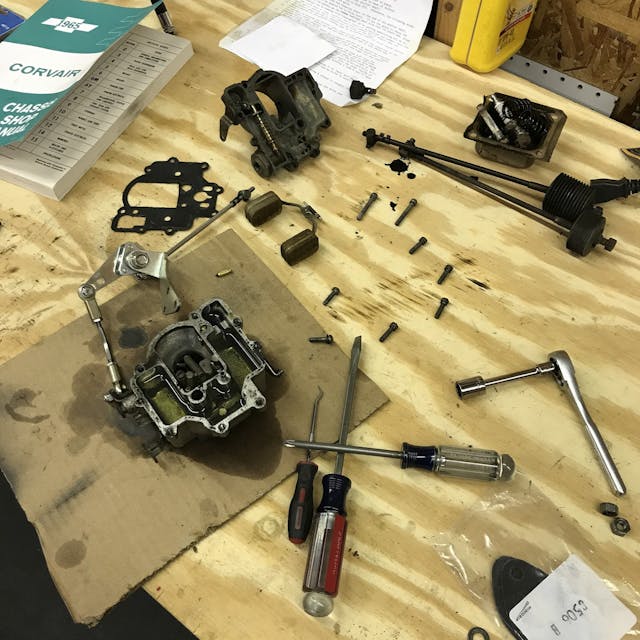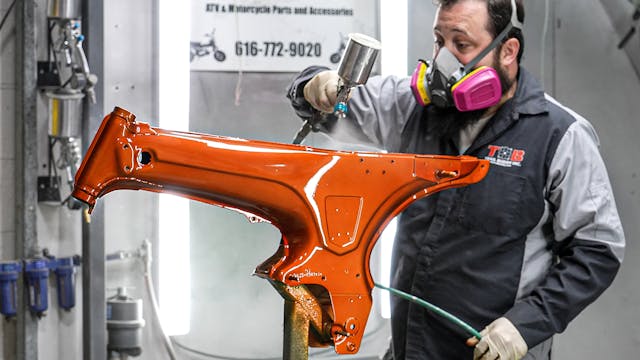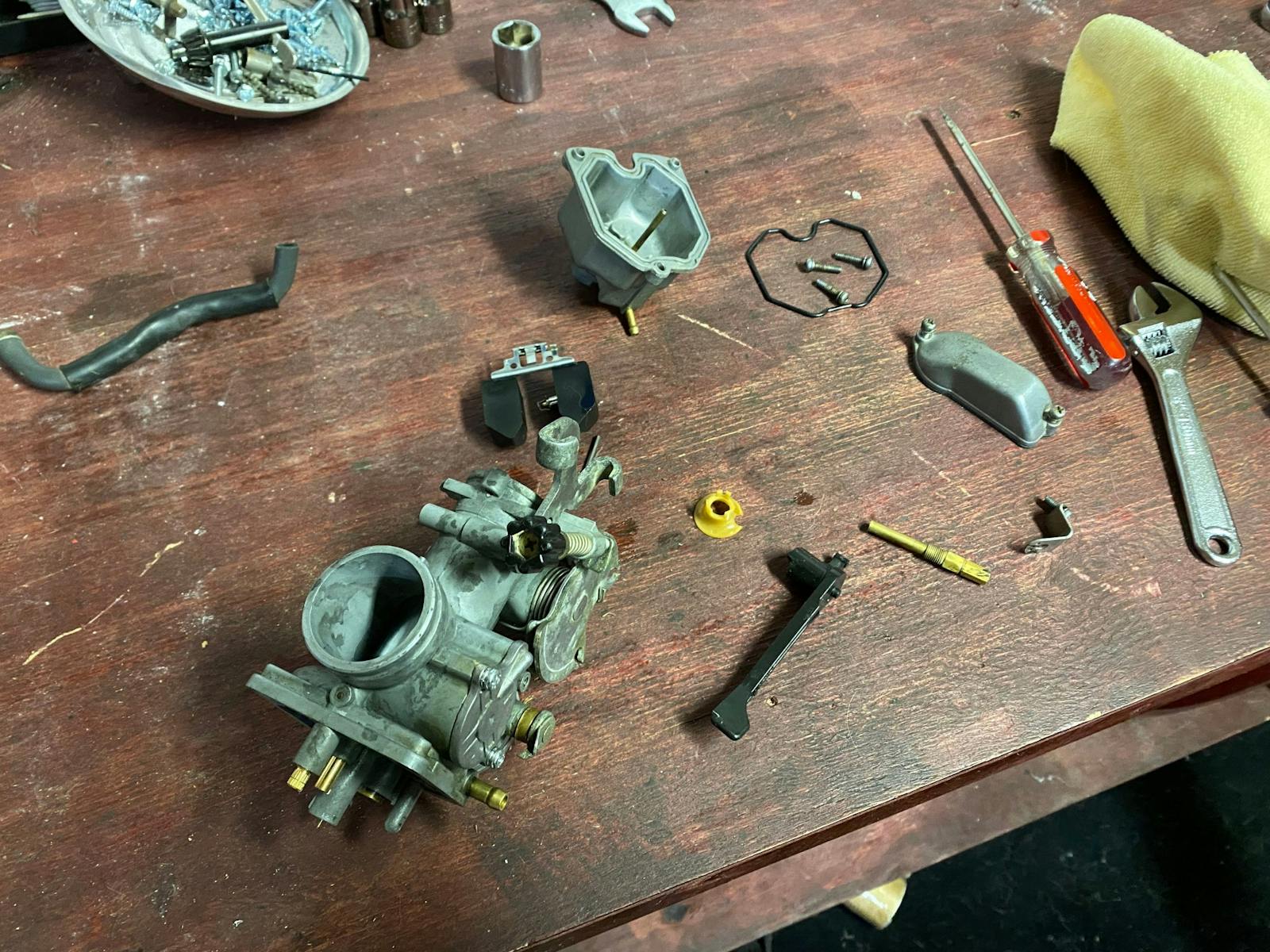The 6 most complicated restoration steps
A restoration in and of itself is complicated. Taking an object that is in less than desirable condition and returning it to its original condition—or as close to it as possible—requires tons of skill and understanding for simple objects. The restoration of a nice hardwood dining table could take weeks to do properly and that is a dozen pieces of wood. Scale that up to an automobile with thousands of precision parts that all have to interact flawlessly and, yeah, restorations are complicated.
Even if you elect to pay a pro there are steps in a restoration that just cause us to grimace at the thought of the task. Could boil down to the cost, time, or complexity of what needs to happen, or it could just be that for reasons unknown you just don’t want to. No matter, here are six of the most complicated restoration steps.
Carburetor rebuilding and tuning

It’s oddly polarizing to say this one, but the fact of the matter is proper care and feeding of carburetors takes an understanding of how they work. Take a minute to talk to a person who doesn’t like carbs and it usually boils down to how finicky the small passages are to keep clean and understanding how one seemingly small change affects the rest of the system. It nearly requires a degree in physics and chemistry to fully grasp just how precision-cut chunks of metal can accurately meter the amount of fuel going into the engine across a range of conditions. In short, it’s complicated.
Cylinder head assembly
The pieces are bigger than carburetors, but assembling a cylinder head requires the same attention to detail and even more specialty tools. Assembling a head that lasts requires setting proper spring pressures and sealing, which involves careful machining, parts selection, and also tidy and careful assembly. Yes, it is possible to just slap one together but could and should are two different things.
Engine machine work
We actually talked about this topic yesterday with a video from Jim’s Machine Shop, Inc on the process to complete just two of the machining steps required to bring a five-decade-old engine block back to service-ready status. It is literally tons of tools that possess the power to save an engine and also could mangle the operator or workpiece in horrific ways if anything but a skilled operator is at the controls. The precision required is humbling and the consequences of getting it wrong are significant.
Differential gear setup
Similar to the cylinder heads, differentials are something that most home mechanics don’t do often and that leads to it being a bit of a struggle when you do need the skill. Getting the gear spacing set perfectly on most differentials requires an understanding of precise shimming and the proper reading of the pattern in the paint that shows how the gears are aligned and meshing. Davin makes it look a little easy in this video and it still takes him a whole hour to have everything sorted out, prepped, and ready to work. It’s almost never that easy in the real world and, on top of it, gear oil is likely the most foul-smelling substance you’ll encounter when working on a car.
Paint application

Mixing ratios, application techniques, and expensive specific-use equipment all conspire to make a paint job difficult, and that is before you even talk about space or safety. The chemicals used in a paint job are a serious health concern and also can be a pain to dispose of after the fact. Even if you have all that knowledge and equipment there is still the process of preparing the object to be painted. Knowing which primer to use when, what the surface finish should be, how long to wait between coats, and how to get a truly flat surface that will have the desired finished look is hardly simple.
Automatic transmission rebuilding
In the hierarchy of things understood by most enthusiasts, the internals of an automatic transmission exists as witchcraft to many. Valve bodies with precise-size check balls and springs that need to be in the perfect place make carburetors appear to be a middle-school project if you are doing anything but disassembling and reassembling by the book. Even then it is easy to get confused or lost in the cryptic valve body that has a hundred passageways and none of them are clear and easy to see. Impossible? Hardly. Certainly complicated though.



Knowing where to start, and where to stop.
(I don’t desire / never done a nut and bolt restoration)
I agree with everybody who said ‘rust’.
I have good mechanical skills, and can just do a lot in general. To me it`s common sense or thinking outside the box, sort of Mcguyvering on the fly. Some people have inate skills since they were a kid while others couldn`t replace a lightbulb. Everybody has their skills. My accountant friend has no idea how I can do what I do.
I find that time, inclination, and desire to actually do some of the things I was fully capable of completing in the past seem to wane the older I get. Even the desire to pay someone else to do it gets harder and harder!
You hit the nail on the head! Motivation @ 76. I have a 1968 427 Corvette running when stopped driving 9 years ago. Like others, developed skills in engines, trans, fiberglas & wiring. Heck, even rebuilt my Merc in-line 6 outboard when threw a rod in 70’s & bought/ rebuilt airplane with Contintental 6 cyl in 80’s. Never seen inside an airplane engine. Flew 6 yrs, even Texas to Bahamas, never fell out of sky.
Now my 2 Corvettes 68 & 87 , owned since new, sit in barn 6 yrs untouched in 1100 sq ft barn.. I can paint/ upholster but just rather spend time on my twin Cumins diesel boat traveling Bahamas 4-6 mos at a time. Meby yet…
I need (want) to rebuild two Weber carbs. I bought the kits and looked at all the tiny parts and have been procrastinating for two years.
That respirator with a beard?
The hardest part of restoration is correcting the previous owners “repairs”. Way too many guys out there that order the shiny bling parts from the Jeg’s catalog, but never bothered to buy a shop manual or Chilton’s book. On my last buy, the previous owner had installed a serpentine belt conversion with a chrome alternator, but had the transmission shift cable hose clamped to the headers and had duct taped the cowl vents shut so rain wouldn’t pour onto the carpet and your feet! The hardest part of restoration is just doing it right. Fix what needs fixing, do it correctly, and above all make the car a safe driver before you start modifying or chrome anything.
Beautiful work ,i wish i would have got into the machine stage of the engine work instead of just repair. i was always amazed at the process the block goes through while at a machine shop. keep up the great work.
All these projects look “simple and easy” and am sure I could do them all in record time and have plenty of parts left over.
Still looking for the OBD connector on my ’46 CJ2A!!
Seven years into our project because of limited $s the most important need is to understand and learn the, “Three steps forward and four steps back” dance.
With a few more years to finish, I ask myself too often, “What was I thinking?”
Blessings!
That guy painting must restore alot of CT70’s! He even has a Jig to hold the frame made up.
Cool!
It’s a bit over a month since Hallowe’en, but you’ve scared the hell out of me with this article.
OK, I already knew to never trespass in these territories…
From Dick O’Kane’s great book “How to repair your foreign car, for the complete idiot”:
“Carburetor is a French word for ‘leave it alone'”.
I went over to a friends friend pole barn years ago. There was a 67 gto in there all torn down to a bare shell Every nut and bolt was removed. Not one piece was bagged or tagged. Unless this person was a Pontiac guru (which I can probably guarantee they were not) that car probably never went back together
The degree of difficulty goes up exponentially with lack of knowledge and experience. Patience and perseverance are key attributes outside of having the the ‘free’ time that a proper restoration requires.